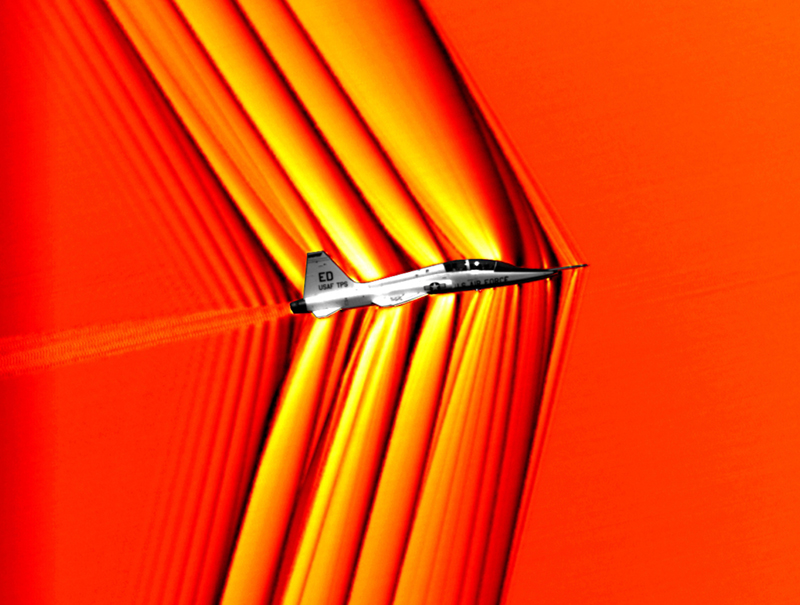NASA Webinar: Schlieren Imaging Research and Technologies
Flow visualization is one of the fundamental tools of aeronautics research, and schlieren imaging can help make important invisible flow features visible. NASA researchers have been employing new background-oriented schlieren techniques that use a visually textured background to render air density gradients caused by aerodynamic flow, enabling results that are more informative than those possible with modeling or wind tunnels.
NASA’s webinar will feature researchers, Daniel Banks, Edward Haering, and James T. Heineck, who will discuss the latest schlieren imaging research and technologies developed at NASA for full-scale, in-flight visualizations. Although schlieren has been in use for over a century, recent research by NASA has enabled its application in flight and greatly enhanced the detail of the images that can be obtained. Researchers will share how these innovations deliver high-resolution images, simplifying data collection with computer image processing and eliminating costly lasers, mirrors, and precision alignment requirements.
One of the techniques, Background Oriented Schlieren Using Celestial Objects (BOSCO), uses a celestial object, such as the sun, as a background to secure unique, measurable shock wave images previously attainable only in wind tunnels. This patented image-processing technology captures hundreds of observations with each shock wave, benefitting NASA engineers in their efforts to develop a supersonic aircraft that will produce a soft “thump” in place of a disruptive sonic boom.
A second approach, known as air-to-air background oriented schlieren (AirBOS), involves using cameras on one airplane to photograph another. A new refinement of the technique leverages concurrent referencing to deliver high-resolution images without requiring any overtake by the target aircraft and easier off-axis data collection (i.e., different perspective angles). This technology also has applications for flow visualization of vortex location and evolution, engine exhaust plumes, and transonic phenomena, which help the understanding that leads to enhanced aerodynamic performance.
During the webinar, you will learn how NASA’s technologies and capabilities are available to industry and other organizations through NASA’s Technology Transfer Program.




